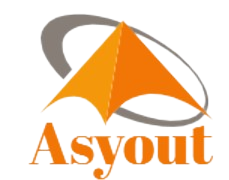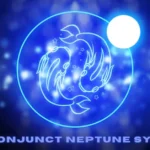Introduction to Translation and its Importance
Translation is more than just converting words from one language to another. It’s an intricate dance of culture, context, and emotion. In our increasingly globalized world, the role of a vertėjjas—translator—is paramount. Every day, businesses expand their reach across borders, authors share stories that resonate with diverse audiences, and individuals seek connections beyond language barriers.
The importance of translation cannot be overstated; it fosters understanding and collaboration in ways that enrich our lives. Yet behind every translated text lies a skilled professional who deftly navigates nuances and subtleties. Let’s dive deeper into what being a translator entails and explore the fascinating art of this essential profession.
The Role of a Translator
A translator serves as a bridge between languages and cultures. Their role goes beyond merely converting words; it’s about conveying meaning, tone, and emotion.
Understanding context is crucial. A skilled translator must grasp the nuances of both source and target languages. This ensures that the message resonates with the intended audience.
Cultural awareness plays a significant part in their work. It helps avoid misinterpretations and fosters effective communication. Translators often delve into cultural references to maintain authenticity.
Additionally, they need excellent research skills. Sometimes, specific terminology requires deep dives into various subjects for accuracy.
The job is dynamic and varies by industry—literature, legal documents, or marketing materials all demand different approaches. Each project offers unique challenges but also opportunities for creativity and growth in language mastery.
Types of Translation: Literal vs. Dynamic
Translation comes in various styles, but two primary approaches stand out: literal and dynamic.
Literal translation focuses on word-for-word accuracy. This method preserves the original structure and wording as closely as possible. It’s often used for legal documents or technical texts where precision is crucial. However, it can result in awkward phrasing that may not resonate with the target audience.
Dynamic translation, on the other hand, emphasizes conveying meaning rather than sticking rigidly to the source text. It allows translators to adapt phrases and idioms so they feel natural in the new language. This approach is prevalent in literature, marketing materials, and conversational content.
Both methods have their places within translation work. The choice between them depends on context, purpose, and audience expectations. Understanding these differences helps a vertėjjas select the best strategy for each project.
Common Challenges Faced by Translators
Translators often encounter a variety of challenges that can make their work quite demanding. One significant hurdle is the cultural nuance embedded in languages. Words or phrases may carry different implications depending on context, making it crucial for translators to grasp these subtleties.
Another common issue is maintaining consistency throughout a project. A single term might have multiple translations, and keeping track of which one to use requires attention to detail. This inconsistency can lead to confusion for the reader.
Time constraints also pose difficulties. Deadlines often pressure translators, affecting quality and sometimes leading to rushed work.
Staying updated with language evolution remains essential. Languages are living entities that change over time; a translator must adapt continuously to remain relevant in this ever-evolving landscape.
Tips for Becoming a Successful Translator
To become a successful vertėjjas, immersing yourself in languages is essential. Read extensively in both your source and target languages. This exposure sharpens your vocabulary and understanding of nuances.
Practice regularly. Translation is a skill that improves with repetition. Translate various texts to broaden your experience, from literature to technical documents.
Networking matters too. Join translation associations or online forums where you can share insights and learn from others in the field.
Stay updated on industry trends and tools. Familiarize yourself with CAT (computer-assisted translation) tools like SDL Trados or MemoQ, which streamline the workflow.
Never underestimate the power of feedback. Seek critiques from peers or mentors to refine your skills further and ensure high-quality translations every time you work on a project.
Tools and Resources for Translation
Translators today have a wealth of tools at their fingertips. These resources streamline the translation process and enhance accuracy.
Translation software like SDL Trados and MemoQ offers powerful features for project management. They help maintain consistency across large texts, ensuring that every word aligns with previous translations.
Online glossaries are also essential. Websites such as ProZ and TermWiki allow translators to access industry-specific terms quickly. This can drastically improve the quality of specialized texts.
Collaborative platforms enable real-time communication among translators. Tools like Google Docs and Slack foster teamwork, making it easier to discuss nuances in language or culture.
Engaging with professional communities online is invaluable. Forums on LinkedIn or dedicated translator groups offer insights into best practices while providing support from fellow vertėjai navigating similar challenges.
Conclusion
Translation is a crucial bridge that connects cultures, ideas, and information. Mastering the art of translation requires more than just language proficiency; it demands an understanding of context, nuance, and the subtleties of communication.
The role of a vertėjjas goes beyond mere word-for-word conversion. It involves capturing the essence of the source material while making it resonate with a new audience. Different types of translation—be it literal or dynamic—serve varying purposes in this intricate process.
Translators often face challenges such as ambiguity in language or cultural references that may not transfer well. However, these hurdles can be overcome with practice and dedication. Aspiring translators can benefit from tips like continuous learning and immersing themselves in both languages they work with.
Utilizing tools and resources designed for translators can significantly enhance efficiency. From CAT tools to glossaries, having the right support system is essential for success.
With commitment to craft and ongoing education, anyone can excel in this field. The journey offers opportunities for creativity while fostering global connections through language mastery. Embracing these aspects will lead you toward becoming a highly sought-after vertėjjas who makes impactful contributions to various fields.
FAQs
What does “vertėjjas” mean?
“Vertėjjas” is a term used to describe a translator, a professional skilled in converting text or speech from one language to another.
Why is the role of a vertėjjas important?
A vertėjjas is crucial for effective global communication, enabling the transfer of ideas and information across different languages and cultures.
What skills are required to be a vertėjjas?
Key skills for a vertėjjas include fluency in multiple languages, cultural understanding, attention to detail, and strong communication abilities.
How does one become a vertėjjas?
To become a vertėjjas, one typically needs advanced language proficiency, formal education in translation, and experience in the field, often through certification or specialized training.
What types of translation does a vertėjjas handle?
A vertėjjas may work on various types of translation, including written documents, spoken language in meetings or conferences, and specialized fields such as legal, medical, or technical translation.







